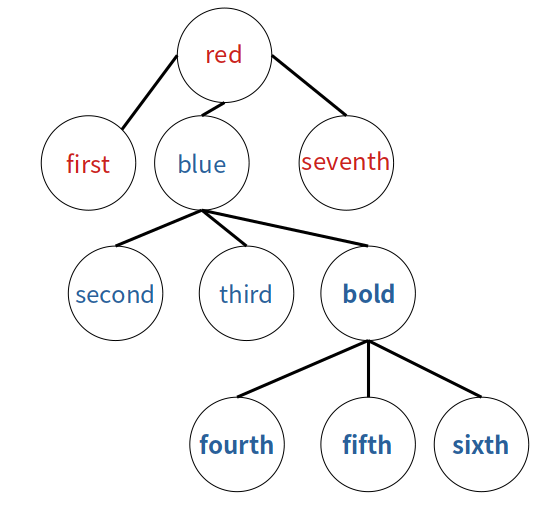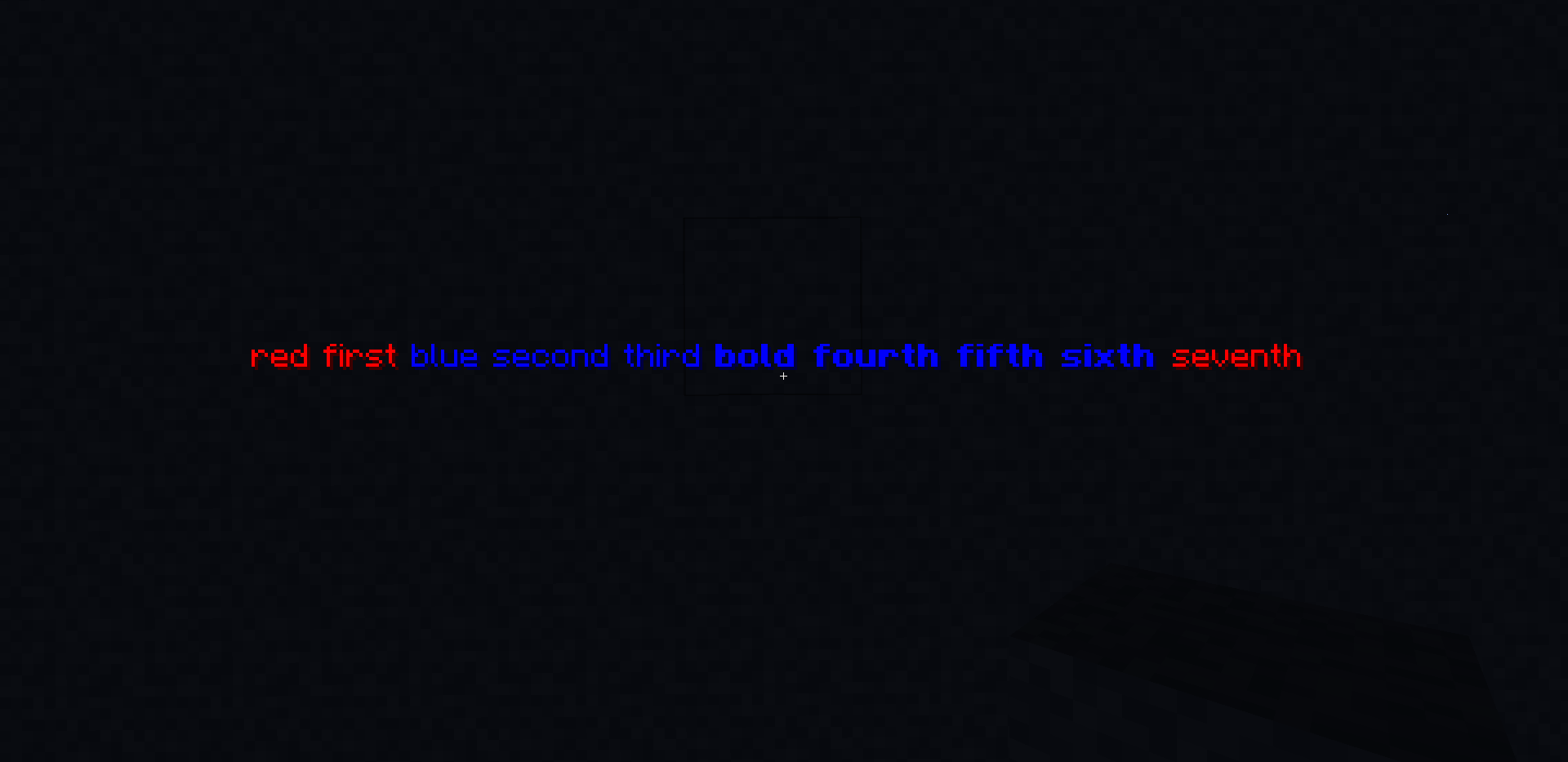Text Components
A Component is a holder for text which can be formatted and chained with other components via its subtype MutableComponent. A component can be created using one of the available static helpers:
| Method Name | Description |
|---|---|
literal | it creates a component which simply wraps the passed in text. |
nullToEmpty | it's the same as #literal except it creates an empty component if null has been passed |
translatable | it creates a component which is represented as localized text to user, read internationalization for more details. |
empty | it creates an empty component |
keybind | it creates a component which is represented as the name of current keyboard key of the passed key mapping. |
nbt | it creates a component for representing nbt data specified by path inside dataSource |
score | it creates a component for representing the objective's score of an entity specified by the entity selector name. |
selector | it creates a component for displaying the list of names of entities selected by the entity selector pattern. |
A component's text contents are represented by ComponentContents. Notably, the subtype TranslatableContents not only supports localization but also text formatting.
Applying Style
Components can be formatted (e.g., bold, click actions, color) via Styles. Styles are immutable, creating a new Style each time when modified. The empty style Style#EMPTY can be used as a base for configuration.
Multiple styles can be merged together with #applyTo(Style other); other will override all non-configured of the current object.
After configuring a style, it can be applied to a component with either MutableComponent#setStyle for overwriting, or #withStyle for merging:
// Creates MutableComponent wrapping literal "Hello!"
MutableComponent text = Component.literal("Hello!");
// Copies empty style and sets color to blue and makes it italic
Style blueItalic = Style.EMPTY
.withColor(0x0000FF)
.withItalic(true);
// Copies empty style and sets color to red
Style red = Style.EMPTY
.withColor(0xFF0000);
// Copies empty style and makes it bold
Style bold = Style.EMPTY
.withBold(true);
// Copies empty style and makes it both underlined and strikethrough
Style doubleLines = Style.EMPTY
.withUnderlined(true)
.withStrikethrough(true);
// Sets style of the text to be blue and italic
text.setStyle(blueItalic);
// Overwrites blue and italic style to be red, bold, underlined, and strikethrough
text.withStyle(red).withStyle(bold).withStyle(doubleLines);
This creates a red, bold text with two lines:

Chaining Components
MutableComponent#append can chain multiple components together. Chained components can be retrieved with MutableComponent#getSiblings.
Component stores its siblings like a tree and is traversed in preorder; the parent style is merged with those of its siblings.

The code below will create a component with the same structure in the above example:
// Create text only components
MutableComponent first = Component.literal("first ");
MutableComponent second = Component.literal("second ");
MutableComponent third = Component.literal("third ");
MutableComponent fourth = Component.literal("fourth ");
MutableComponent fifth = Component.literal("fifth ");
MutableComponent sixth = Component.literal("sixth ");
MutableComponent seventh = Component.literal("seventh ");
// Create components with style
MutableComponent red = Component.litearl("red ").withStyle(Style.EMPTY.withColor(0xFF0000));
MutableComponent blue = Component.literal("blue ").withStyle(Style.EMPTY.withColor(0x0000FF));
MutableComponent bold = Component.literal("bold ").withStyle(Style.EMPTY.withBold(true));
// Structure created components in the same way as the image
red.append(first).append(blue).append(seventh);
blue.append(second).append(third).append(bold);
bold.append(fourth).append(fifth).append(sixth);

Text Formatting
Text formatting is the process of inserting data as text into predefined larger text. It can be used for displaying coordinates, showing unit measurements, etc. Format specifiers are used for indicating where a text can be inserted.
TranslatableContents allows two types of format specifiers: %s and %n$s. The component uses the second parameter onwards, denoted as args , for holding what object to insert in place of a format specifier.
%s is replaced with elements of args in order they appear, i.e., the first %s is replaced with the first element of args, and so on.
%n$s is positional specifier; each positional specifier can denote which element in args will replace the specifier via the number n.
- Formatting
x:%s y:%s z:%swith[1, 2, 3]asargsresults inx:1 y:2 z:3 - Formatting
Time: %1$s mswith17asargsresults inTime: 17 ms - Formatting
Player name: %2$s, HP: %1$swith[10.2, Dev]asargsresults inPlayer name: Dev, HP: 10.2
Any Component element within args will be transformed into a formatted text string.